Ditapis dengan
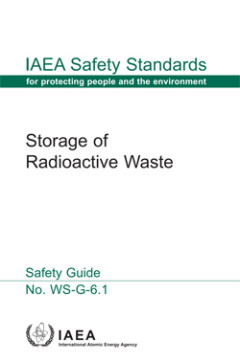
Storage of Radioactive Waste, Safety Guide
Radioactive waste is generated in a broad range of activities involving a wide variety of radioactive materials associated with, for example, the operation of nuclear facilities, the use of sealed radioactive sources in industry, the use of human made radionuclides in hospitals and laboratories, and the decommissioning of such facilities. The physical, chemical and radiological characteristics …
- Edisi
- -
- ISBN/ISSN
- 9201067062 / 1020525X
- Deskripsi Fisik
- 55 p. : Illus. ; 24 cm
- Judul Seri
- Safety Standards Series No. WS-G-6.1
- No. Panggil
- -
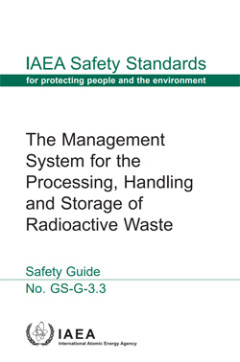
THE MANAGEMENT SYSTEM FOR THE PROCESSING, HANDLING AND STORAGE OF RADIOACTIVE…
The objective of this Safety Guide is to provide guidance on the development and implementation of management systems for the pretreatment, treatment, conditioning and storage of radioactive waste. This publication also includes a description of how to apply the requirements detailed in IAEA Safety Standards Series No. GS-R-3, to the activities associated with producing a packaged waste form fo…
- Edisi
- -
- ISBN/ISSN
- 9789201020086 / 1020525X
- Deskripsi Fisik
- 79 p. : Illus. ; 24 cm
- Judul Seri
- Safety Standards Series No. GS-G-3.3
- No. Panggil
- -
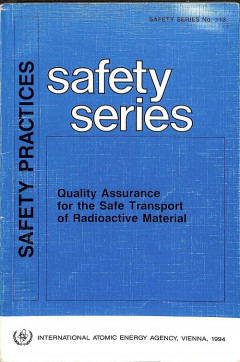
Quality Assurance for the Safe Transport of Radioactive Material, Safety Prac…
This publication provides guidance and gives detailed advice on methods and practical examples to develop quality assurance (QA) programmes for the safe transport of radioactive material. It further promotes a flexible approach to the development of a QA programme and may be used to prepare such a programme for a specific application by selection of appropriate features.
- Edisi
- -
- ISBN/ISSN
- 9201036949 / 00741892
- Deskripsi Fisik
- 92 p. : Illus. ; 24 cm
- Judul Seri
- Safety Series No. 113
- No. Panggil
- 539.7 IAE q
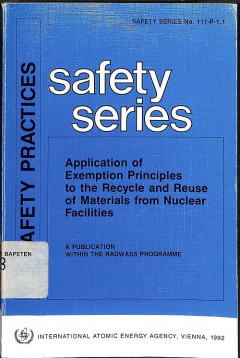
Application of Exemption Principles to the Recycle and Reuse of Materials fro…
This Safety Practices publication, a part of the lAEA’s Radioactive Waste Safety Standards (RADWASS) programme, provides guidance on those application of internationally agreed principles for determining those levels of radionuclides in materials below which they can be exempted from regulatory control and can be recycled or reused without any further restriction. lt illustrates a methodology…
- Edisi
- -
- ISBN/ISSN
- 9201049927 / 00741892
- Deskripsi Fisik
- 204 p. : Illus. ; 24 cm
- Judul Seri
- Safety Series No. 111-P-1.1
- No. Panggil
- 621.48 IAE a
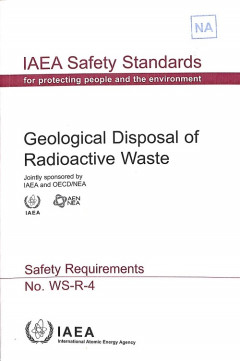
Geological Disposal of Radioactive Waste, Safety Requirements
The objective of this Safety Requirements publication is to set down the protection objectives and criteria for geological disposal and to establish the requirements that must be met to ensure the safety of this disposal option, consistent with the established principles of safety for radioactive waste management.
- Edisi
- -
- ISBN/ISSN
- 920105705
- Deskripsi Fisik
- 49 p. : Illus. ; 24 cm
- Judul Seri
- Safety Standards Series No. WS-R-4
- No. Panggil
- -
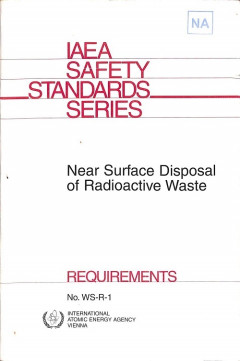
Near Surface Disposal of Radioactive Waste, Requirements
This publication sets out the basic safety requirements related to the disposal of radioactive wastes in near surface repositories. As a Safety Requirements publication it is supported by a number of associated Safety Guides which provide guidance on the implementation of the requirements. Its principles are derived from the Safety Fundamentals publication, Safety Series No. 111-F, The Principl…
- Edisi
- -
- ISBN/ISSN
- 9201010990 / 1020525X
- Deskripsi Fisik
- 29 p. : Illus. 24 cm
- Judul Seri
- Safety Standards Series No. WS-R-1
- No. Panggil
- 621.0397 IAE n
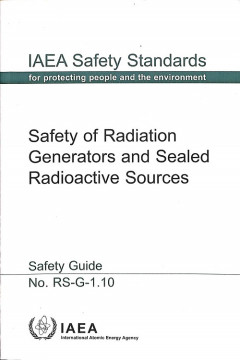
Safety of Radiation Generators and Sealed Radioactive Sources, Safety Guide
The objective of this Safety Guide is to assist Member States in implementing regulatory requirements for radiation sources that will ensure their safety. To that end, this publication provides guidance on infrastructure responsibilities for safety, on methodologies for performing safety assessments and on specific design and operational measures that should be taken to ensure safety throughout…
- Edisi
- -
- ISBN/ISSN
- 9201075065 / 1020525X
- Deskripsi Fisik
- 59 p. : Illus. ; 24 cm
- Judul Seri
- Safety Standards Series No. RS-G-1.10
- No. Panggil
- -
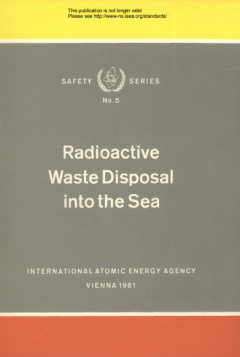
Safety Series No. 5 Radioactive Waste Disposal Into The Sea
The views expressed in this Report represent the joint results of the Panel members acting in their capacity as individual scientists. Thus they are not necessarily an expression of the opinion of any body or authority with which the Panel members may normally be associated in the course of their employment. The Appendices are largely the work of sub-committees or individual members of th…
- Edisi
- -
- ISBN/ISSN
- -
- Deskripsi Fisik
- -
- Judul Seri
- -
- No. Panggil
- -
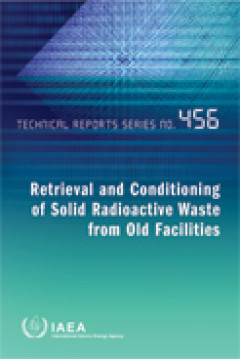
Retrieval and Conditioning of Solid Radioactive Waste from Old Facilities
This report provides information and discussion on planning, methodologies and technologies for retrieval and reconditioning of radioactive wastes recovered from old, inadequate disposal or storage facilities. The objective is to improve waste safety and security in accordance with modern requirements. Selected international experiences in waste retrieval and recovery projects are included. The…
- Edisi
- -
- ISBN/ISSN
- 9201124066 / 00741914
- Deskripsi Fisik
- 161 p. : Illus. ; 24 cm
- Judul Seri
- Technical Reports Series No. 456
- No. Panggil
- -
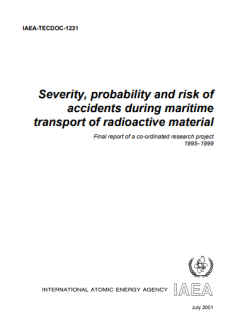
Severity, Probability and Risk of Accident During Maritime Transport of Radio…
The primary purpose of this CRP was to provide a co-ordinated international effort to assemble and evaluate relevant data using sound technical judgement concerning the effects that fires, explosions or breaches of hulls of ships might have on the integrity of radioactive material packages. The probability and expected consequences of such events could thereby be assessed. If it were shown that…
- Edisi
- -
- ISBN/ISSN
- -
- Deskripsi Fisik
- -
- Judul Seri
- IAEA-TECDOC-1231
- No. Panggil
- 363.1799 IAE s
 Karya Umum
Karya Umum  Filsafat
Filsafat  Agama
Agama  Ilmu-ilmu Sosial
Ilmu-ilmu Sosial  Bahasa
Bahasa  Ilmu-ilmu Murni
Ilmu-ilmu Murni  Ilmu-ilmu Terapan
Ilmu-ilmu Terapan  Kesenian, Hiburan, dan Olahraga
Kesenian, Hiburan, dan Olahraga  Kesusastraan
Kesusastraan  Geografi dan Sejarah
Geografi dan Sejarah